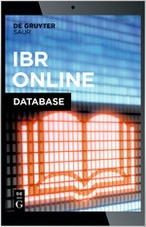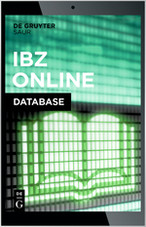- 04 June 2021
Article/Publication Details
Views: 2141
HUSSERL AND DIMENSIONS OF TEMPORALITY: A FRAMEWORK FOR THE ANALYSIS OF TEMPORAL EXPERIENCE
| Title in the language of publication: | HUSSERL AND DIMENSIONS OF TEMPORALITY: A FRAMEWORK FOR THE ANALYSIS OF TEMPORAL EXPERIENCE |
| Author: | ULDIS VĒGNERS |
| Issue: |
HORIZON. Studies in Phenomenology. Vol. 10, №1 (2021), 186-211 |
| Language: | English |
| Document type: | Research Article |
| DOI : 10.21638/2226-5260-2021-10-1-186-211 | PDF (Downloads: 1813) |
Abstract
Temporality is one of the key components of our experience, but the experience of time is hardly one and the same for all of us throughout our lives. The experience of time in its entirety is not solid and simple. It is a fluid and complex phenomenon consisting of a multitude of dimensions. In medical phenomenology and phenomenological psychopathology there are ample cases of different temporal experiences analysed in the context of the illness experience. However, only a few attempts have been made to propose a conceptual framework that could not only be used to conduct a concrete analysis in a more systematic manner, but also provide a solid and comprehensive theoretical basis. The aim of this article is to draw on the rich distinctions found in Husserl’s phenomenology to outline a framework of different temporal dimensions for the analysis of temporal experience. The framework could provide conceptual tools to analyse temporal experiences in any field of study that deals with the human experience, including medical phenomenology and phenomenological psychopathology. The resulting analysis would be not only clearer, more comprehensive and precise, but also more systematic and conceptually consistent. The framework consists of fourteen dimensions of temporal experience ordered in seven binary distinctions: (1) change and structure, (2) immanence and transcendence, (3) ownness and intersubjectivity, (4) passivity and activity, (5) receptivity and spontaneity, (6) presentation and representation, (7) unthematized temporality and thematized temporality.
Keywords
phenomenology, Edmund Husserl, time experience, temporality, framework, altered states of consciousness, psychopathology, qualitative research.
References
- Aho, K. (2020). Temporal Experience in Anxiety: Embodiment, Selfhood, and the Collapse of Meaning. Phenomenology and the Cognitive Sciences, 19 (2), 259–270. doi: 10.1007/s11097-018-9559-x
- Beckers, G., & Homberg, V. (1992). Cerebral Visual Motion Blindness: Transitory Akinetopsia Induced by Transcranial Magnetic Stimulation of Human Area V5. Proceedings of the Royal Society of London. Series B: Biological Sciences, 249 (1325), 173–178. doi: 10.1098/rspb.1992.0100
- Bernet, R. (2005). Real Time and Imaginary Time: On the Husserlian Conception of Temporal Individuation. In G. Banham (Ed.), Husserl and the Logic of Experience (217–236). Palgrave Macmillan.
- Brough, J. B. (2002). Time and the One and the Many (In Husserl’s Bernauer Manuscripts on Time Consciousness). Philosophy Today, 46 (5), 142–153.
- Brough, J. B. (2005). Translator’s Introduction. In R. Bernet (Ed.), Phantasy, Image Consciousness, and Memory (1898–1925) (xxix–lxviii). Springer. doi: 10.1007/1-4020-2642-0
- Brough, J. B. (2010). Notes on the Absolute Time-Constituting Flow of Consciousness. In D. Lohmar & I. Yamaguchi (Eds.), On Time—New Contributions to the Husserlian Phenomenology of Time (21–49). Springer Netherlands. doi: 10.1007/978-90-481-8766-9_2
- Cooper, S. A., Joshi, A. C., Seenan, J., Hadley, D. M., Muir, K. W., Leigh, R. J., & Metcalfe, R. A. (2012). Akinetopsia: Acute Presentation and Evidence for Persisting Defects in Motion Vision: Figure 1. Journal of Neurology, Neurosurgery & Psychiatry, 83 (2), 229–230. doi: 10.1136/jnnp.2010.223727
- Cowan, N. (2008). Sensory Memory. In Learning and Memory: A Comprehensive Reference (23–32). doi: 10.1016/B978-012370509-9.00172-8
- Dubois, J., & VanRullen, R. (2011). Visual Trails: Do the Doors of Perception Open Periodically? PLoS Biology, 9 (5), e1001056. doi: 10.1371/journal.pbio.1001056
- Fuchs, T. (2005). Implicit and Explicit Temporality. Philosophy, Psychiatry, & Psychology, 12 (3), 195–198. doi: 10.1353/ppp.2006.0004
- Fuchs, T. (2013). Temporality and Psychopathology. Phenomenology and the Cognitive Sciences, 12 (1), 75–104. doi: 10.1007/s11097-010-9189-4
- Geniusas, S. (2015). The Pathos of Time: Chronic Pain and Temporality. Dialogue and Universalism, 25 (3), 25–38. doi: 10.5840/du201525365
- Geniusas, S. (2020). The Phenomenology of Pain. Ohio University Press.
- Griffith, G. M., Totsika, V., Nash, S., & Hastings, R. P. (2012). ‘I Just Don’t Fit Anywhere’: Support Experiences and Future Support Needs of Individuals with Asperger Syndrome in Middle Adulthood. Autism, 16 (5), 532–546. doi: 10.1177/1362361311405223
- Horton, J. C., & Trobe, J. D. (1999). Akinetopsia from Nefazodone Toxicity. American Journal of Ophthalmology, 128 (4), 530–531. doi: 10.1016/S0002-9394(99)00177-4
- Husserl, E. (1966). Zur Phänomenologie des Inneren Zeitbewusstseins (1893–1917) (R. Boehm, Ed.). Martinus Nijhoff.
- Husserl, E. (1973). Experience and Judgment: Investigations in a Genealogy of Logic (L. Landgrebe, Ed.; J. S. Churchill & K. Ameriks, Trans.). Northwestern Univ. Press.
- Husserl, E. (1982). Cartesian Meditations: An Introduction to Phenomenology (D. Cairns, Trans.; 7th ed.). Martinus Nijhoff.
- Husserl, E. (1983). Ideas Pertaining to a Pure Phenomenology and to a Phenomenological Philosophy. First Book: General Introduction to a Pure Phenomenology (F. Kersten, Ed.). Martinus Nijhoff.
- Husserl, E. (2001). Die Bernauer Manuskripte über das Zeitbewusstsein (1917/18) (R. Bernet & D. Lohmar, Eds.). Springer.
- Husserl, E. (2006). Späte Texte über Zeitkonstitution (1929-1934): Die C-Manuskripte (D. Lohmar, Ed.). Springer.
- Kortooms, T. (2002). Phenomenology of Time: Edmund Husserl’s Analysis of Time-Consciousness. Springer Science+Business Media. Retrieved from https://www.springer.com/gp/book/9781402001215
- Landon, J., Shepherd, D., & Lodhia, V. (2016). A Qualitative Study of Noise Sensitivity in Adults with Autism Spectrum Disorder. Research in Autism Spectrum Disorders, 32, 43–52. doi: 10.1016/j.rasd.2016.08.005
- Lohmar, D. (2020). The Time of Phantasy and the Limits of Individuation. Husserl Studies, 36, 241–254. doi: 10.1007/s10743-020-09274-7
- Moskalewicz, M. (2016). Disturbed Temporalities. Insights from Phenomenological Psychiatry. Time & Society, 25 (2), 234–252. doi: 10.1177/0961463X15577257
- Moskalewicz, M., & Schwartz, M. A. (2020). Temporal Experience as a Core Quality in Mental Disorders. Phenomenology and the Cognitive Sciences, 19 (2), 207–216. doi: 10.1007/s11097-020-09665-3
- Rizzo, M., Nawrot, M., & Zihl, J. (1995). Motion and Shape Perception in Cerebral Akinetopsia. Brain, 118 (5), 1105–1127. doi: 10.1093/brain/118.5.1105
- Sacks, O. (1999). Awakenings (1st ed). New York: Vintage Books.
- Shanon, B. (2001a). Being Outside the Dominion of Time. MAPS Newsletter, 11 (2), 48–53.
- Shanon, B. (2001b). Altered Temporality. Journal of Consciousness Studies, 8 (1), 35–58.
- Sokolowski, R. (1999). Temporality. In Introduction to Phenomenology (130–145). Cambridge University Press. doi: 10.1017/CBO9780511809118
- Streubel, T. (2003). Zur Phänomenologie der Zeit. Phänomenologische Forschungen, 295–329. JSTOR.
- Toombs, S. K. (1990). The Temporality of Illness: Four Levels of Experience. Theoretical Medicine, 11 (3), 227–241. doi: 10.1007/BF00489832
- Tsai, H., & Mendez, M. F. (2009). Akinetopsia in the Posterior Cortical Variant of Alzheimer Disease. Neurology, 73 (9), 731–732. doi: 10.1212/WNL.0b013e3181b59c07
- Vogel, D. H. V., Falter-Wagner, C. M., Schoofs, T., Krämer, K., Kupke, C., & Vogeley, K. (2020). Flow and Structure of Time Experience—Concept, Empirical Validation and Implications for Psychopathology. Phenomenology and the Cognitive Sciences, 19 (2), 235–258. doi: 10.1007/s11097-018-9573-z
- Warren, N. de (2010). The Inner Night: Towards a Phenomenology of (Dreamless) Sleep. In D. Lohmar & I. Yamaguchi (Eds.), On Time—New Contributions to the Husserlian Phenomenology of Time (273–294). Springer Netherlands. doi: 10.1007/978-90-481-8766-9_14
- Watts, A. (2013). The Joyous Cosmology: Adventures in the Chemistry of Consciousness (2nd ed.). New World Library.
- WeirdGirlCyndi. (2007, September 17). Sensory Overload Simulation [YouTube Video]. Retrieved from https://www.youtube.com/watch?v=BPDTEuotHe0
- Wiggins, O. P., & Schwartz, M. A. (2006). Schizophrenia: A Phenomenological-Anthropological Approach. In M. C. Chung, B. Fulford, & G. Graham (Eds.), Reconceiving Schizophrenia (113–128). Oxford University Press. doi: 10.1093/med/9780198526131.003.0006
- Wittmann, M. (2018). Altered States of Consciousness: Experiences out of Time and Self. MIT Press.
- Zeki, S. (1991). Cerebral Akinetopsia (Visual Motion Blindness): A Review. Brain, 114 (2), 811–824. doi: 10.1093/brain/114.2.811
- Zihl, J., Von Cramon, D., & Mai, N. (1983). Selective Disturbance of Movement Vision after Bilateral Brain Damage. Brain, 106 (2), 313–340. doi: 10.1093/brain/106.2.313
- Zihl, J., von Cramon, D., Mai, N., & Schmid, Ch. (1991). Disturbance of Movement Vision after Bilateral Posterior Brain Damage. Further Observations and Follow up Observations. Brain, 114 (5), 2235–2252. doi: 10.1093/brain/114.5.2235
- Zihl, J., & Heywood, C. A. (2015). The Contribution of LM to the Neuroscience of Movement Vision. Frontiers in Integrative Neuroscience, 9. doi: 10.3389/fnint.2015.00006

This work is licensed under a Creative Commons Attribution-NonCommercial 4.0 International License.

|
|
|
|
|

|
|
|
|
|

|
|
|
|
|
|
|
|
|
|
|
|
|
|
|
|
|
|
|
|
|
|

|
|
|
|
|
|
|
|
|
|
|
|
|
|
|
|
|
|
|
|
|
|
|
|
|
|
|
|

|

|
Social networks:





